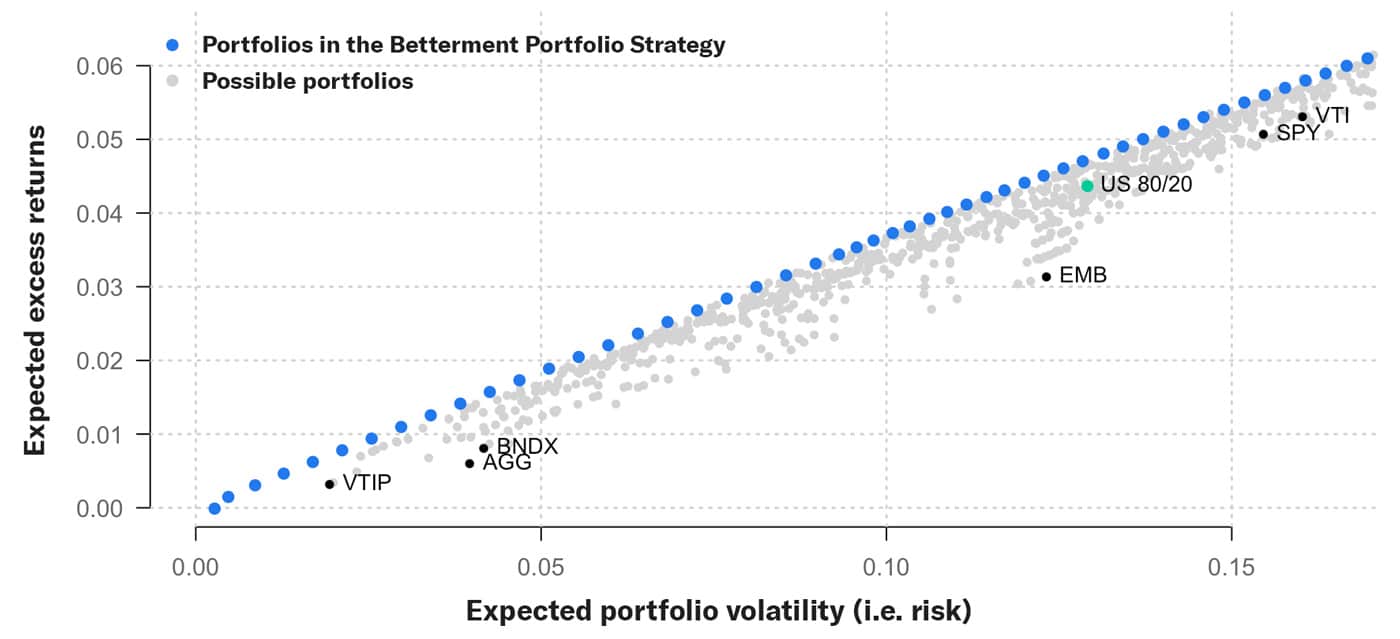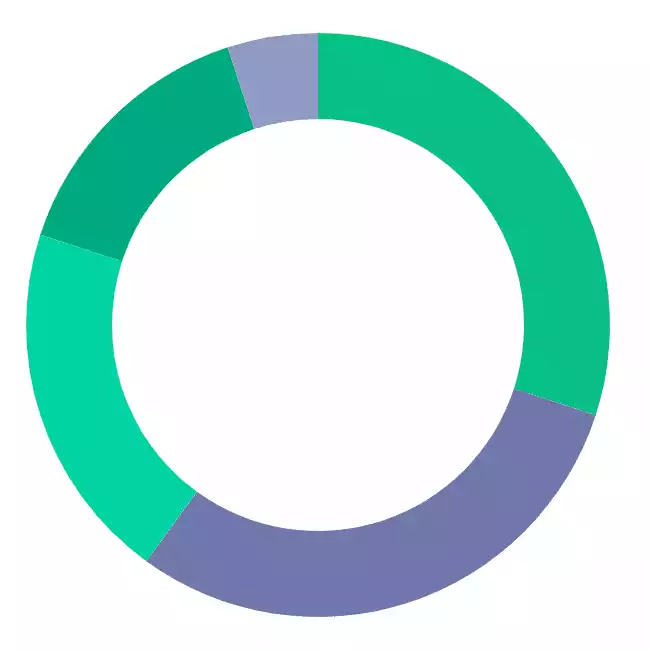Even those who consider all things personal finance, particularly all things investing, to be a hobby and speak all the related lingo fluently, may not be familiar with the name Harry Markowitz or the term efficient frontier. However, they may be familiar with the term Modern Portfolio Theory.
What is the goal of investing? To create an investment strategy that allows us to get the highest return possible for the lowest amount of risk.
It seems like common sense. But investing has been around for a lot longer than most of us probably realized.
The NYSE was founded on 17 May 1792 when 24 stockbrokers signed the Buttonwood Agreement on Wall Street in New York City.
But the common-sense strategy of seeking a high return with a low-risk is comparatively new, proposed if not in your lifetime, certainly your parent’s or grandparent’s lifetimes.
Just in the second half of the 20th century!
And while it seems mundane to us now, having had it drilled into our heads since we first started to learn about investing, it was revolutionary at the time.
It’s creator, Harry Markowitz, won a Noble Prize in Economics for it.
While the theory of risk-return is a simple one, how to get there is pretty complicated. The efficient frontier is where we want our portfolios to be and is the cornerstone of modern portfolio theory.
We’ll break it down in terms we laypeople can understand.
What Is the Efficient Frontier?
The efficient frontier is the outer edge of the returns you can get for any level of risk. When you mix stocks and bonds, you have less investment risk.
The efficient frontier theory says risk and return relate to each other. We want to avoid risk and maximize profits.
When we create an uncorrelated asset allocation we can reduce our level of risk without hurting returns.
How many more asset classes can you add to your portfolio before you reach or exceed the limit of having a balanced mix of risk and return?
The goal is to construct a diversified portfolio at or very near to the efficient frontier.
Harry Markowitz and Modern Portfolio Theory
Harry Markowitz is an economist who created the modern portfolio theory (MPT) through his article “Portfolio Selection.” It ran in the Journal of Finance in 1952.
His work alongside his colleagues Merton H. Miller and William F. Sharpe, without hyperbole, changed the way people invested their money.
The three men shared the Noble Prize in Economics in 1990.
Markowitz is currently a professor at the Rady School of Management at the University of California at San Diego.
How did people invest before MPT?
People focused on buying individual stocks, looking for a sure thing that would generate good returns without too much risk exposure.
Markowitz disavowed this method of investing because choosing individual stocks is inherently risky. Markowitz invented a formula that enables investors to trade off risk tolerance and reward expectations and create the ideal portfolio.
A diversified portfolio holding unrelated securities is at the heart of MPT.
Tweet ThisMPT concentrates on two basic concepts.
That all investors want to maximize their rate of return for any given level of risk. And that the level of portfolio risk reduces with a diversified portfolio composed of unrelated securities.
How the Efficient Frontier Works
If a portfolio is on the efficient frontier is determined using a graph. Asset returns are the y-axis, and its risk level is the x-axis.
The investment itself is plotted out on the graph according to those two factors.
The investment is then compared to the curved line that is the efficient frontier, which determines if it falls above or below it.
Your efficient frontier is unique because it factors each investor’s risk tolerance to determine which assets may earn the highest return within the amount of risk you’re willing to take.
How the Efficient Frontier Benefits Your Investment Portfolio
Of course, there is no such thing as a 100% risk-free investment. The stock market is inherently risky.
The trade-off for that risk is the expected return from your investments.
But you want to minimize your risk as much as possible. That’s the benefit of the efficient frontier.
It’s a tool that can help you get the most out of your investments by analyzing the risk and returns within a portfolio.
The efficient frontier also helps determine if you should withdraw money from an investment with a certain level of risk for a similar investment with less risk but the same return.
The Uncompensated Risk Gap
The balance for any investor is to take enough risk in your portfolio to increase your wealth but not take so much risk that you’re jeopardizing it.
But there are two kinds of risk.
Systematic Risk
Systematic risk is the market risk you can’t reduce with diversification. MPT and the efficient frontier can’t alleviate this kind of risk because it’s the inherent nature of investing.
Unsystematic Risk
Unsystematic risk is specific to individual stocks. MPT and the efficient frontier insulate you from this type of risk.
In a properly diversified portfolio, whatever risk each asset has is not much of a factor in the overall risk within the portfolio.
The whole is greater than the sum of its parts.
Get our best strategies, tools, and support sent straight to your inbox.
The Optimal Portfolio
What is the optimal portfolio? Well, according to me, one with awesome returns and zero risk.
That’s probably your definition too. But, as Harry said:
It contains securities with the greatest potential returns with an acceptable degree of risk and securities with the lowest degree of risk for a certain level of return.
Optimal portfolio returns fall on the efficient frontier.
Selecting Investments
Again, that ‘perfect balance’ will be different for each of us. An investor unafraid of risk will choose investments at the right end of the efficient frontier while the risk-averse investor will pick from left.
There are many model portfolios you can use when choosing your investments that, historically, have performed well.
A contrarian investment approach that promotes a well-diversified, equity-oriented portfolio that rewards investors who exhibit the courage to stay the course. Swensen, creator of this portfolio is the mastermind behind the Yale Endowment investment strategy.
These portfolios were created by industry experts and have gained popularity over the years. Each one has a specific strategy behind it.
For example, the Swensen Portfolio mentioned above seeks to limit risk by diversifying between asset classes that do well in opposing times.
This portfolio's single goal is to make money in all market conditions regardless of interest rates, deflation, what new pandemic is threatening our shores, or who the POTUS is. It does this by focusing on growth and inflation cycles.
Or take the All Weather Portfolio created by billionaire hedge fund investor Ray Dalio, which seeks to make money in all market conditions regardless of interest rates, deflation, or economic cycles.
In fact, there’s no need to try to time the market investing in this portfolio. Why? Because its performance won’t be impacted regardless of your start date.
Limits of the Efficient Frontier
Investing doesn’t happen in a vacuum. That represents the limits of MPT and the efficient frontier because they’re based on some assumptions that aren’t always true.
One is that asset returns follow a normal distribution, but that’s not so. Securities can have returns that skew from that assumed distribution.
Another massive flaw is the assumption that investors are rational.
Of course, they aren’t rational because they’re human. And humans are often irrational. The acknowledgment of this gave birth to a whole field of study, behavioral finance:
Psychological influences and biases affect the financial behaviors of investors and financial practitioners.
Using the Efficient Frontier
You can play around with this tool to see if your portfolio is on the efficient frontier. If you’re not where you want to be, you can make changes and re-run the graph until you are.
Because a little risk into every portfolio must fall, but when you fall in line on the efficient frontier, you have appropriately managed that risk.









